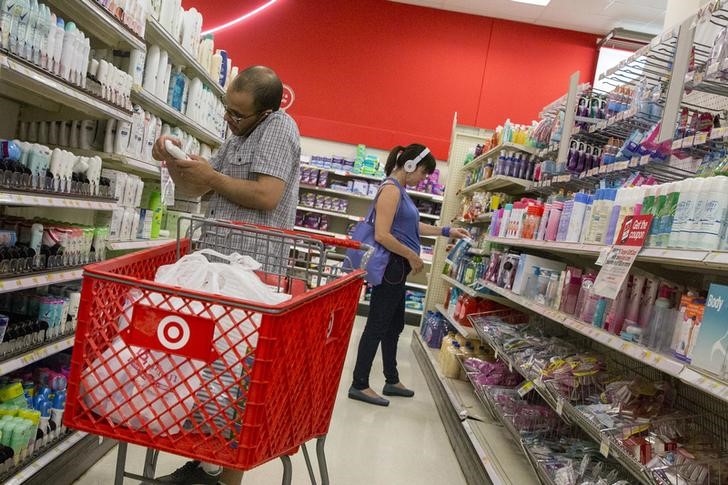By Nandita Bose
CHICAGO (Reuters) - Two days after being promoted to the new position of Target Corp's (N:TGT) Chief Operating Officer, John Mulligan's big job is clear: fix a supply chain that the company blamed for shortages of goods that are undermining sales growth.
On Wednesday, the fourth-largest U.S. retailer blamed its "incredibly complex supply chain" for unacceptable stock levels at its stores this year, forecasting weak growth in current quarter sales at established stores.
The focus on the supply chain network is the latest move by CEO Brian Cornell, who took charge a year ago and announced a restructuring plan in March.
Under that program, Cornell eliminated several thousand corporate jobs, revamped grocery operations and announced a $1 billion investment in supply chain technology.
Mulligan, who was promoted from the position of chief financial officer on Monday, said that in-store product stock levels have been getting worse over the last couple of quarters. Kathee Tesija, the company's former chief merchandising and supply chain officer, was moved to an advisory role in June.
"Given the breadth and complexity of the business, it will always be a challenge to be in stock on every item in every store... but our guests need us to be consistent in delivering everyday essentials," Mulligan said.
Target's supply-chain problems have grown more acute as it has expanded its offering of consumable goods such as meat, fresh produce and dairy products, which in turn have brought customers back to their stores more frequently than in the past.
Target's larger rival, Wal-Mart Stores Inc (N:WMT), has struggled to tackle the problem of running out of stock at its own stores for several years, despite having one of the largest and most sophisticated supply chain networks in the business.
Analysts and industry consultants said that while Wal-Mart's problems revolve around insufficient employees to fill shelves, an issue the company is addressing, Target's issues stem from its reliance on external distributors.
"Target tends to use outside wholesalers and outsources a large amount of distribution, typically on fast-moving consumables," said Burt Flickinger, managing director at retail consulting firm Strategic Resource Group.
Products such as groceries, fresh produce, meat, dairy are replenished up to a 100 times or more every year, and when an outside wholesaler short-ships, Target's stores suffer. The clear solution would be to take control of its supply chain, he added.
"They have had problems in the past with it and they probably rely on third-party wholesalers and distributors more than they need to," said Brian Yarbrough, retail analyst at Edward Jones.
In an earnings conference call Target said its supply chain was built to serve an outdated model in which product flowed from vendors through distribution centers to stores.
The company did not respond to subsequent requests for comment.
Target also has tried to order less inventory than rivals, striving to turn over inventory quickly and reduce capital needs. Typically, retailers like to keep enough stock in their stores to meet around 90 percent of anticipated demand, and over 96 percent for advertised or promotional items, Yarbrough said.

"Target historically has leaned on the side of under-ordering or under-allocating to keep inventory turns high," said Neil Stern, senior partner at retail consultancy McMillan-Doolittle.